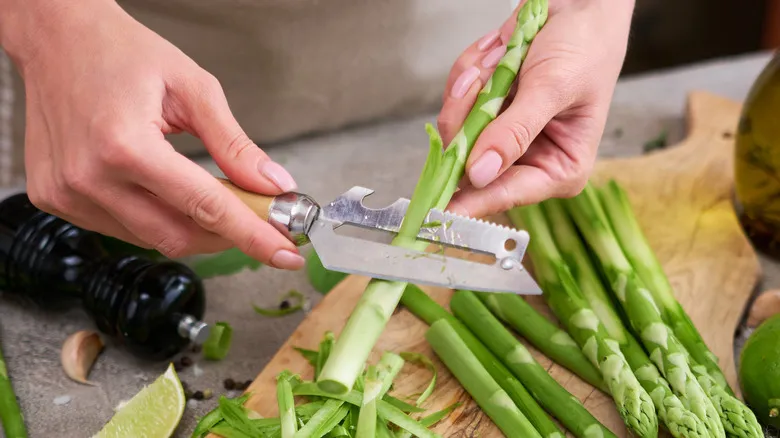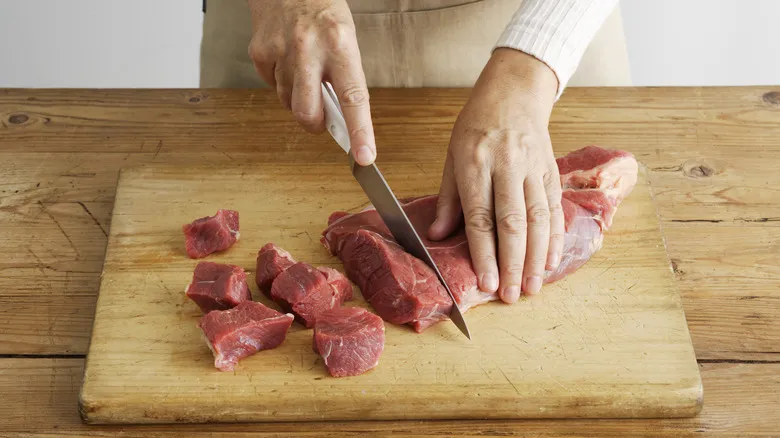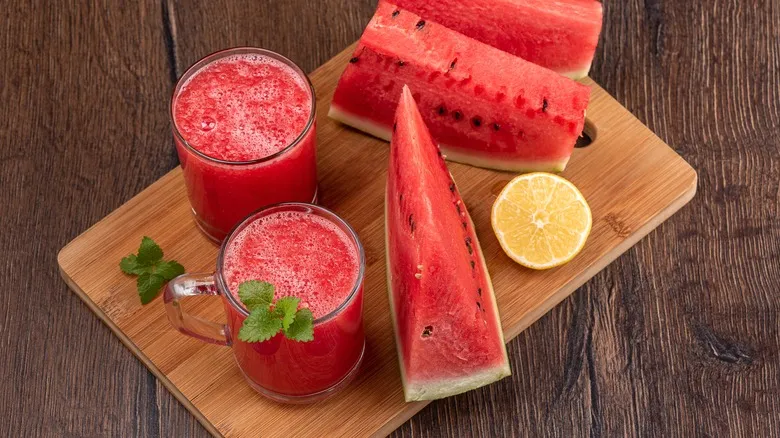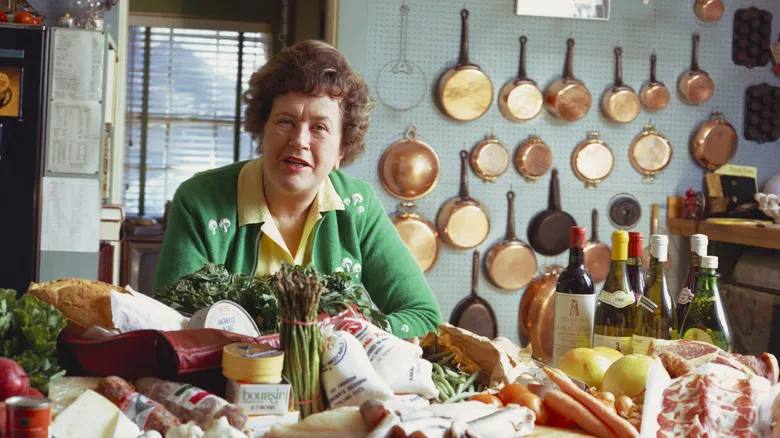Removing the tough outer layer with a peeler is key

A fresh stalk of asparagus, enhanced with a splash of lemon juice and a sprinkle of salt, is one of life's simple pleasures—ideal as a side dish or as a topping for pasta (when prepared correctly, of course). However, there's nothing more disappointing than biting into a tough, stringy stalk that feels like chewing on leather. From late winter to spring, when asparagus is at its peak, bundles of these stalks fill grocery stores and farmers' markets, and many shoppers tend to choose the thinner varieties. Somewhere along the line, it became a common belief that these more delicate, slender stalks offer a more tender bite, while thicker asparagus is often perceived as tough or woody. The reality is more nuanced, and assuming that thinner is always better is a frequent misconception when it comes to asparagus. "Choose the fattest asparagus you can find," Julia Child advised on "The French Chef."
Thicker stalks provide more vegetable to savor, and their robust nature allows them to hold up better during cooking without becoming limp or mushy. Following Child's guidance eliminates the risk of tough asparagus. She recommended peeling stalks thicker than ? inch in diameter to remove the outer layer, exposing the more tender interior and ensuring even cooking, as noted by Sarah Moulton. Once prepared, they can be quickly boiled, steamed, or grilled, and enjoyed down to the last delightful, springy bite. Child preferred hers with sauce Maltaise, a hollandaise infused with orange.
Recommended

The Cutting Board Mistake That Causes Huge Food Safety Hazards

Ree Drummond's 4-Ingredient Strawberry Sauce Can Save Any Boring Dessert

How A Spritz Of Lemon Juice Transforms Watermelon

Upgrade Your Taco Night With Canned Fish And Never Look Back
Next up

